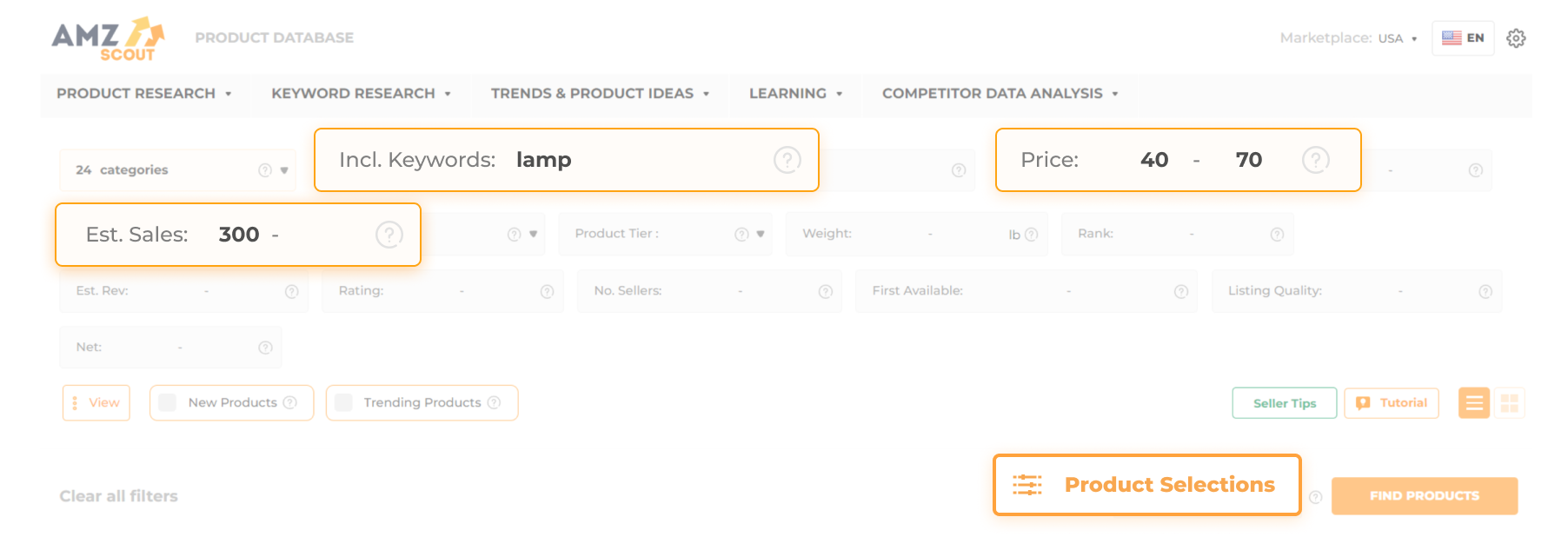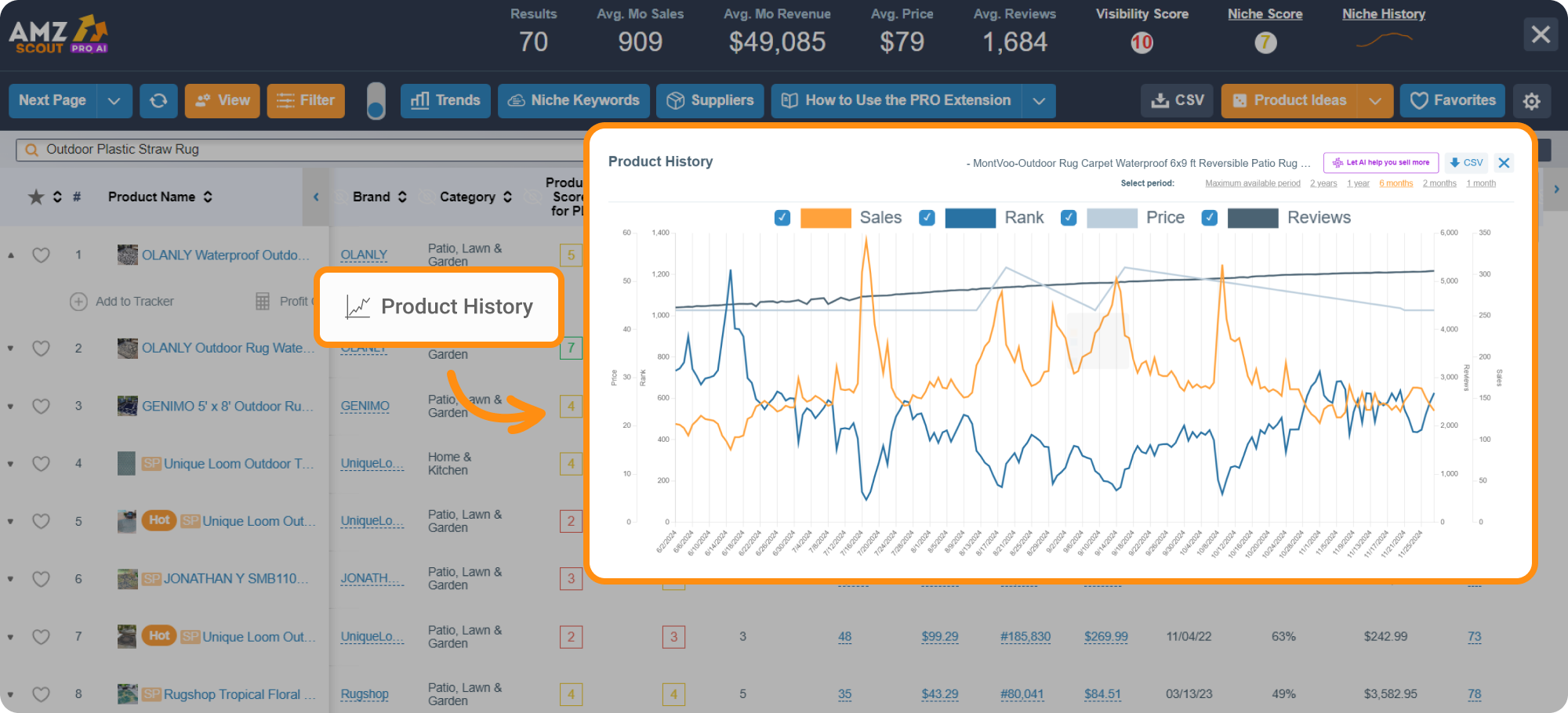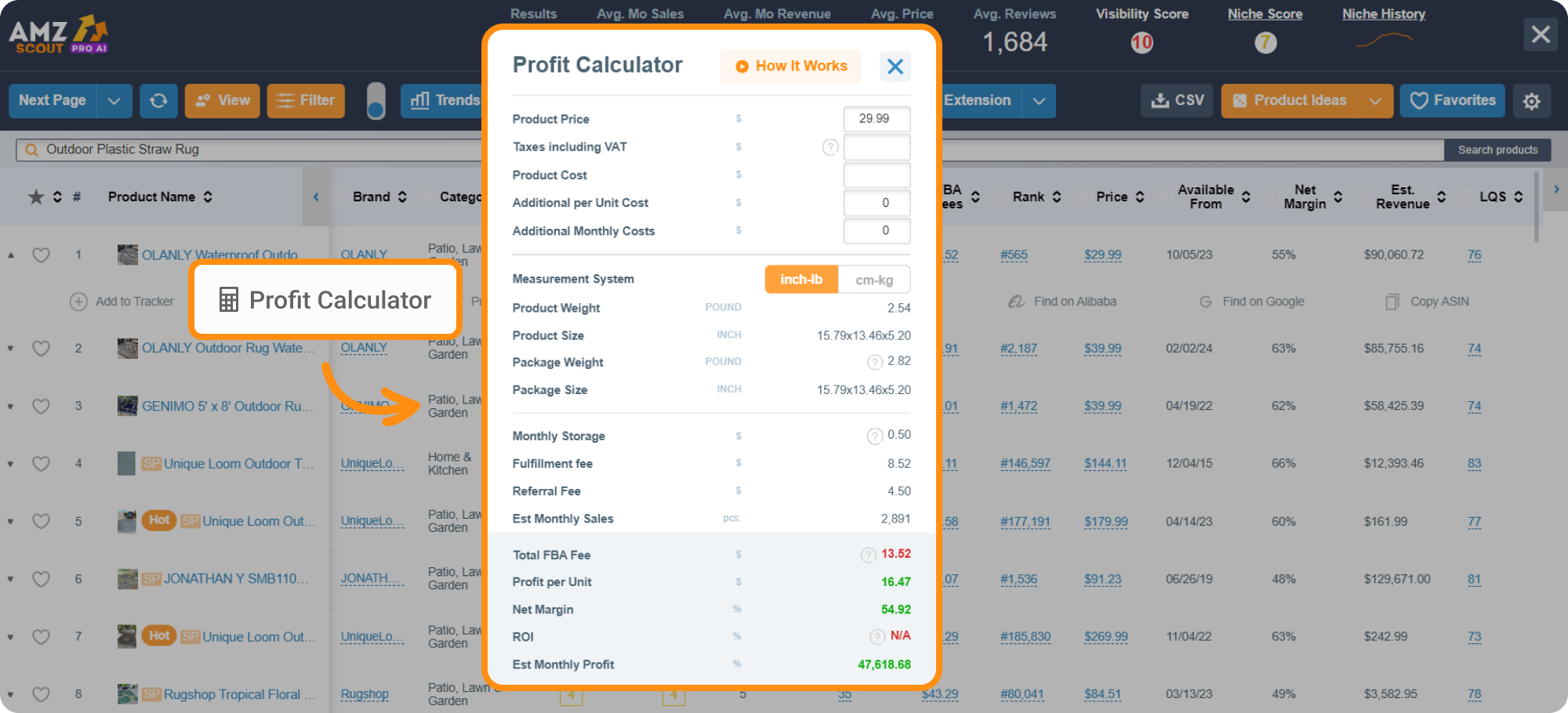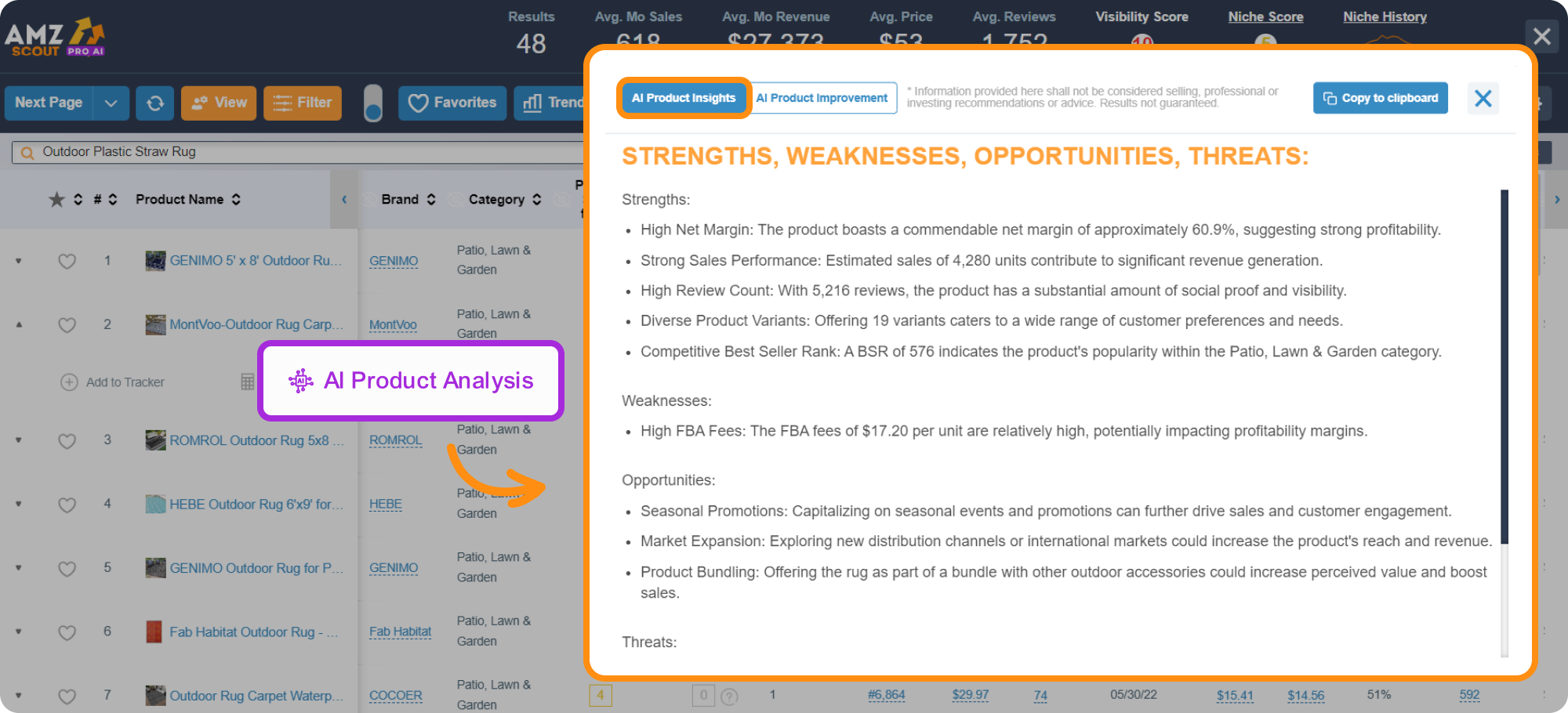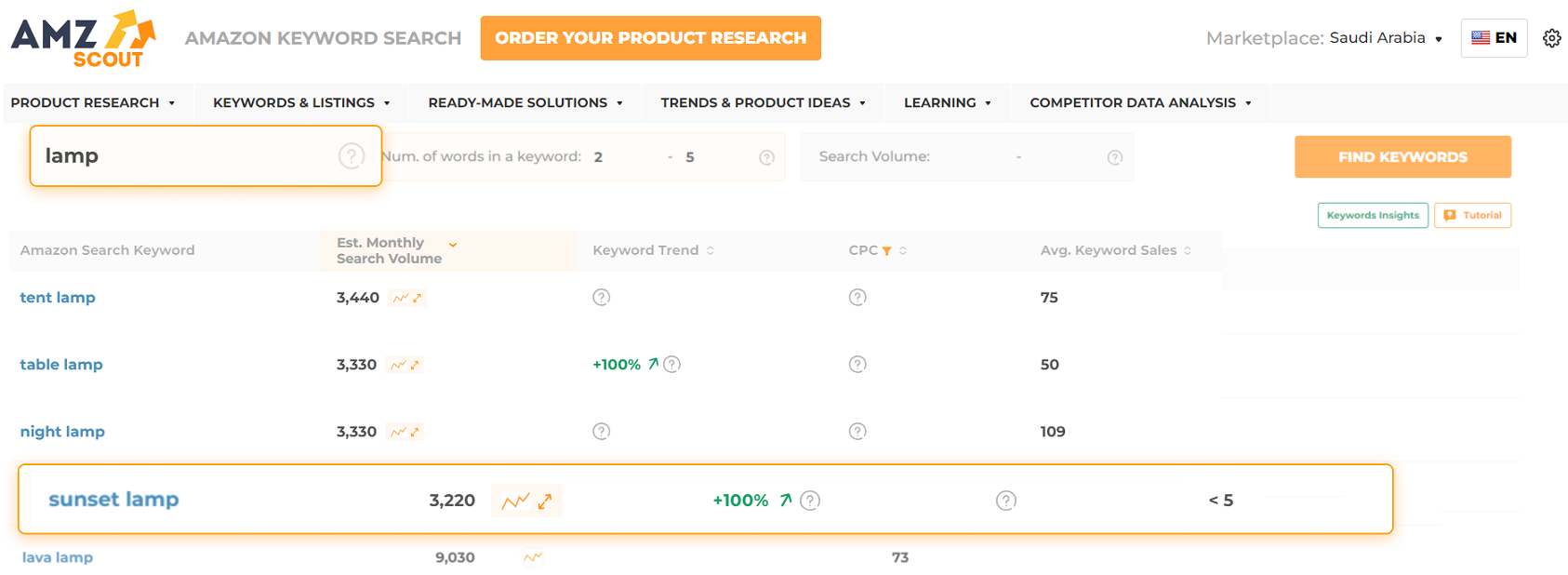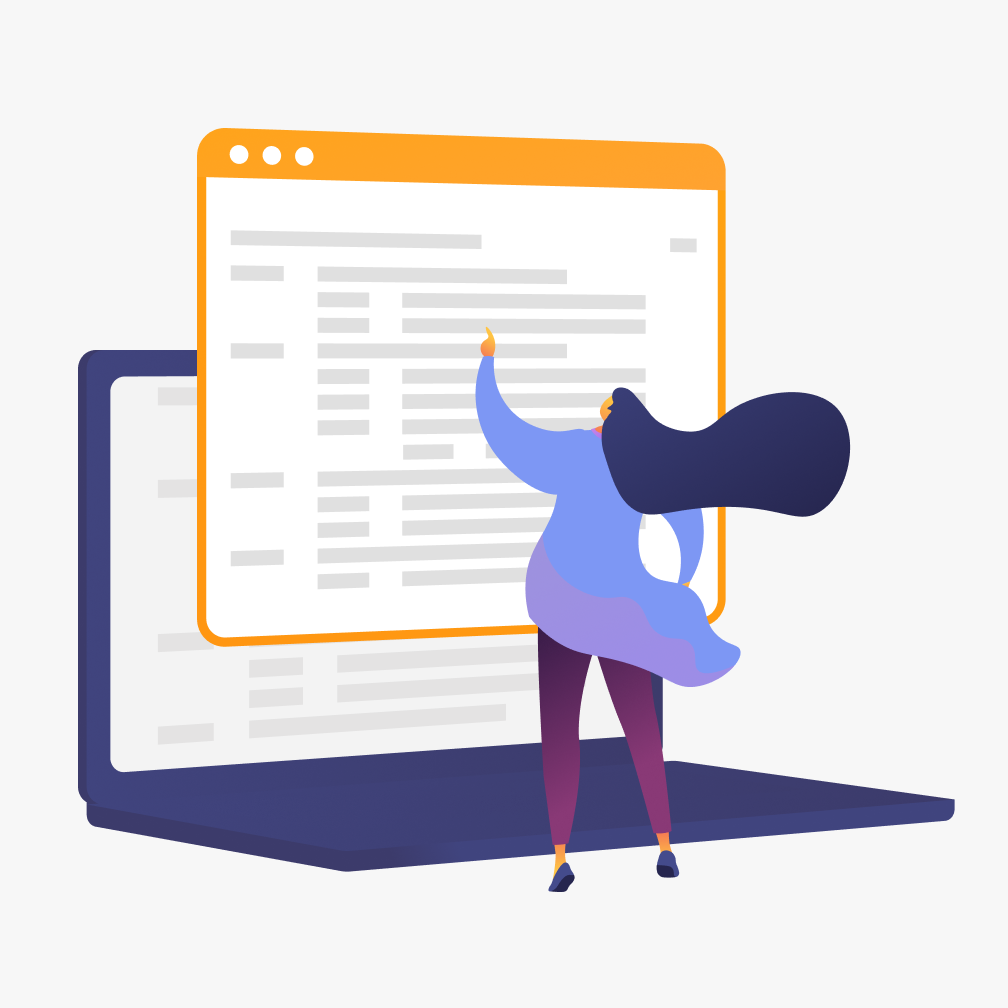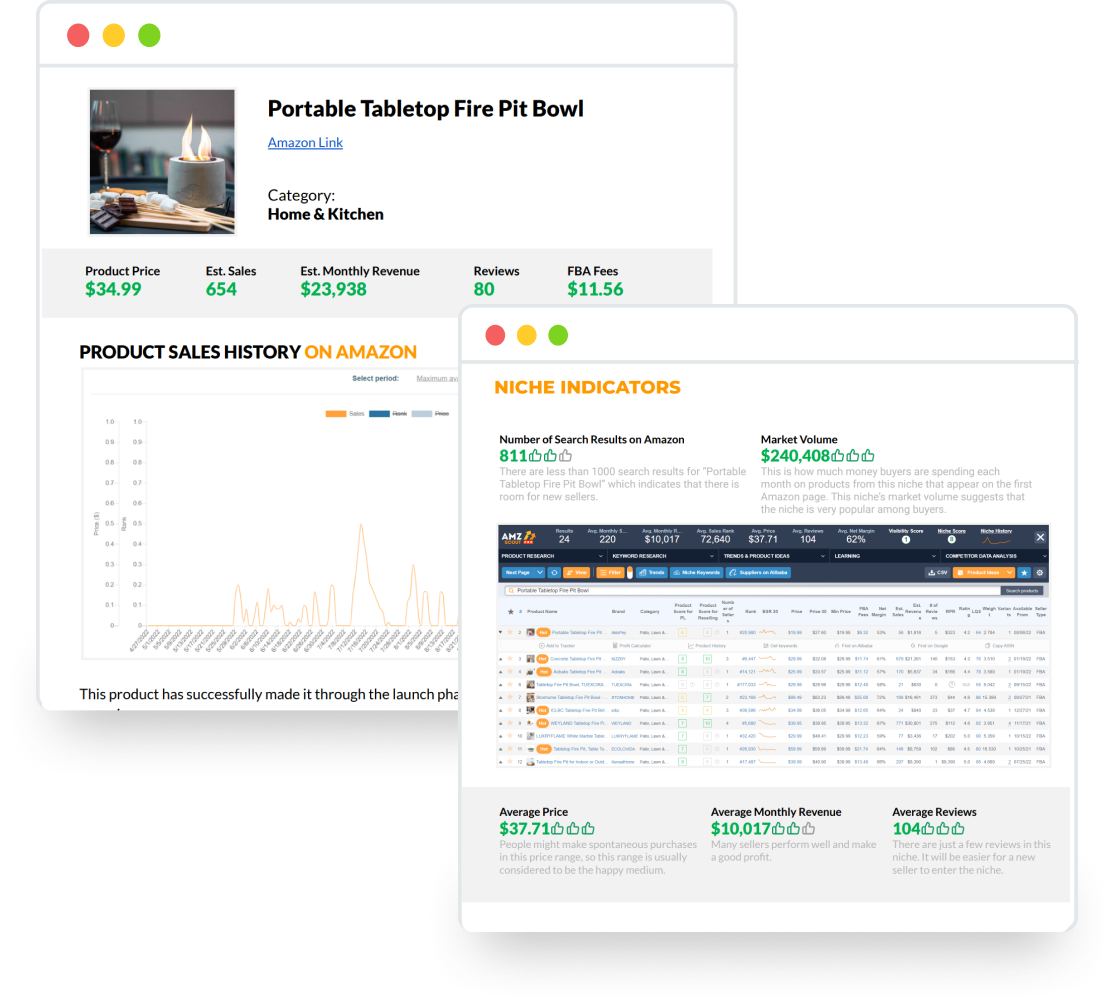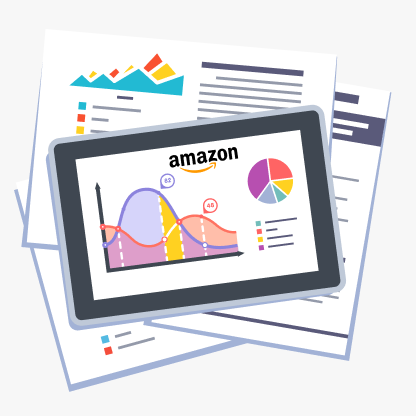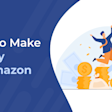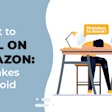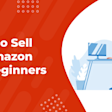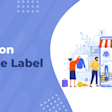
How To Find Products To Sell on Amazon and Generate Profit
Succeeding on Amazon as a seller depends largely on finding profitable products. But with so many options out there, it’s easy to feel overwhelmed and unsure where to start. There are many ways to choose which items to sell on Amazon, each with its own characteristics. You don’t have to rely on just one approach - by understanding each method, you can combine them effectively for optimal results.
In this article, we’ll share the top 10 strategies to help Amazon sellers find winning products to sell.
10 Ways to Find the Best Amazon Products
- Apply Filters to Amazon’s Product Database
- Use Amazon Analytical Software
- Attend Webinars and Other Special Events
- Use Keyword Data
- Outsource Your Research
- Review Trend Reports
- Check Out External Marketplaces
- Utilize the Amazon ‘Best Sellers’ Page
- Leverage Social Media for Product Ideas
- Generate Product Ideas with AI
Method 1: Apply Filters to Amazon’s Product Database
The most straightforward way to select products for your store is to explore Amazon directly. To refine your search and narrow down your options, consider defining specific criteria that fit your needs. Below, you'll find examples of the criteria experienced sellers use to identify profitable products for Amazon FBA:
High demand: Top sellers typically look for products that generate a minimum of 300 sales/month (or 10 sales/day).
Minimal competition: Niches where the top sellers have received less than 400 reviews have more likelihood of being noticed.
Size and weight: Choose products that weigh less than 5 lbs and whose size measures less than 18”x14”x8”. Items that are heavier and larger cost more to store and ship.
Sales price between $30-70: Sellers tend to choose products priced high enough to make money, but not so high that they seem too expensive to buyers.
Price is four times higher than the cost: Sellers find products where the sourcing costs are 25% of your sales price.
These are not all of the available criteria. You can also select a specific product category, the number of other sellers, and more. Choosing a product manually from millions of products that fits your criteria is difficult and time-consuming. To help you find matching products quickly, use the AMZScout Product Database.
Get a Quick List of Products that Match Your Criteria
AMZScout’s Product Database provides data on millions of Amazon products, and features 16 filters to help you focus on those that best meet your needs.
Here’s how to find products to sell on Amazon:
Step 1: Go to the AMZScout Product Database. If you are not registered, you will see a sign-up form. Complete the form to start your free trial.
Step 2: Enter your product criteria. There are many filters to help you refine your precise criteria. For example, you can use one filter to find products with specific rating counts. You can also use the premade “Product Selections” or the suggestions above if you need help.
Step 3: Select the types of products you want to focus on. You could choose to focus on new products (items listed in the last two weeks) and/or trending products (products with sales growth of over 20% over the past one to three months).
Step 4: Get product results. Click “Find Products” to see products that meet your criteria.
Step 5: Create a list of products that catch your interest. You can prioritize the results by clicking on the column header that matters most to you (such as “Estimated Revenue”) to view products with the highest figures first.
Below, you can see the tool in action:
This example includes products with prices between $10-70 with fewer than 200 reviews, those that weigh less than five pounds, and generate monthly sales of over 300. These are based on the criteria recommended for beginners we established above. By following these criteria within this tool, you can make your product research process easy.
Method 2: Use Amazon Analytical Software
The next effective way to hunt for profitable goods is to use the AMZScout PRO AI Extension. With this tool, you can analyze any product directly on the Amazon page and validate its viability. This allows you to compare products in the same niche, and makes it simple to analyze potential product ideas for profitability.
Follow these steps to get started with the AMZScout PRO AI Extension:
Step 1: Install the AMZScout PRO AI Chrome Extension.
Step 2: Search for a product on Amazon. Enter the name of the product you want to analyze into Amazon's search bar. Then, click the icon in the top-right corner of the page to access the PRO AI Extension.
Step 3: Assess how the product aligns with your business model. Click the "Estimated Sales" column to sort by top sales. Check the Product Score next to the item that catches your eye to see if it’s better for reselling or private label, and review the reasons behind the score.
Step 4: Review the product's performance. Click on any product you're interested in and select “Product History” to view the graph with the following metrics:
Sales and pricing history: Review the sales data and pricing changes to confirm that there are no significant drops, and that the trend is stable or increasing.
Review history: Check how sales have performed over time in relation to the number of reviews.
Step 5: Calculate the profit. Click Profit Calculator under the item and enter the costs associated with the product. The tool shows per-sale earnings, helping you determine if the product is worth your time.
Step 6: Evaluate potential opportunities and threats. Click “AI Product Analysis” under the item and select “AI Product Insights” from the upper-left corner of the window. Review the analysis to ensure that the product's strengths outweigh its weaknesses, and identify any associated threats and opportunities.
Using the AMZScout PRO AI Extension for product analysis helps you identify profitable items and understand why some products perform better than others.
Method 3: Attend Webinars and Other Special Events
Learn from experienced sellers who are ready to share their own methods and tips on how to find a product to sell on Amazon. Attending industry events allows you to find new niches and product ideas for your business, meet like-minded individuals and gain valuable insights.

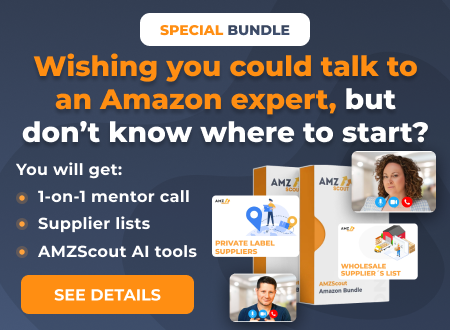
Method 4: Use Keyword Data
One of the best ways to find out what is selling well is to see which keywords receive the most searches online. There are a couple of methods how to get this info:
Check autosuggestions: Start by typing keywords into Amazon and Google search bars to see commonly searched terms related to your product.
Check reviews: Analyze customer reviews to identify frequently mentioned words and phrases that are important to your target audience.
Use keyword tools: Leverage tools like Google Trends to track the popularity of search terms over time and across regions.
To maximize this method, you can also use keyword finders specifically designed for Amazon that provide detailed data associated with certain keywords. A top choice among Amazon sellers is AMZScout’s Keyword Search.
Here is how to use it:
Step 1: Go to AMZScout’s Keyword Search Tool.
Step 2: Enter the name of any product or niche you want to explore (for example, shirts, kitchen items, toys for babies, etc.). You can also opt to include additional search criteria, such as keyword count and search volume.
Step 3: Get keywords. Click "Find Keywords" to retrieve a list of the keywords.
Step 4: Make a list of potential product ideas. Analyze the keyword results by examining both the search volume and the search volume history month-by-month over the past year. This helps you see if a trend is seasonal with big fluctuations, or evergreen with steady demand.
This approach will help you identify the most popular products based on demand.
Method 5: Outsource Your Research
Access to specialized services, like Sellerhook, ensures that product research doesn’t have to require extensive knowledge. You might consider hiring freelancers, but they may not have the expertise you need to find the best Amazon products.
Sellerhook offers expertise, access to millions of products, successful case studies for inspiration, and access to proprietary tools to help you find the right product. With Sellerhook, you’ll also get a report on trending products based on the criteria you have established.
To use this service, simply follow these steps:
Step 1: Go to the Sellerhook website. Place your order by deciding how many product ideas you want to receive (one or five).
Step 2: Fill out a brief survey. Provide details about your preferred category, ideal product price, and other preferences. This helps Sellerhook’s experts conduct detailed research to find the best product opportunities tailored to you.
Step 3: Receive your report. Within 10 business days, a detailed product research report will be sent to your email.
If you want to launch your own successful eCommerce business, Sellerhook is the perfect solution. The expert guidance and tailored approach help you save time while ensuring that the product you pick has high profit potential.

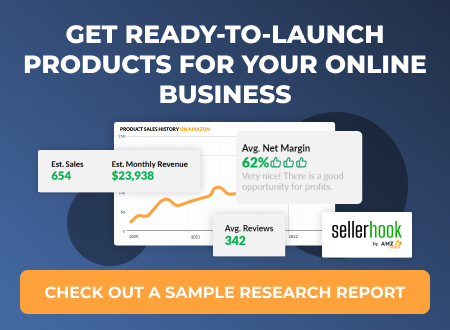
Method 6: Review Trend Reports
You can receive hand-picked product ideas without needing to research products yourself.
An annual subscription to AMZScout gives you these bonuses:
Reports on Amazon’s market news and trending products every month.
19 weekly, curated product ideas from our experts.
Use this information to help you find effective products that would be a perfect fit for your new business or current inventory.
AMZScout’s annual plan makes finding new products a breeze.
Method 7: Check Out External Marketplaces
Other eCommerce marketplaces (some of them big) are worth looking at so you can find out what’s popular across the web.
Here are some steps you can follow when checking out these other marketplaces:
Step 1: Review trending products. On various online marketplaces, explore sections like eBay’s “Explore Popular Categories” or Alibaba’s “What’s Trending Now”.
Step 2: Create a list of potential products based on your criteria.
Step 3: Then, find these products on Amazon and check how well they rank.
This approach helps you find trending products to sell on Amazon, as popular items on one site often expand to others. You can also buy underpriced items to resell on different marketplaces, which is a strategy called ‘online arbitrage’.
Method 8: Utilize the Amazon ‘Best Sellers’ Page
Checking the Amazon ‘Best Sellers’ Page is the easiest way to find top selling products on Amazon. Below is a list of quick steps to follow:
Step 1: Access the Amazon Best Sellers Page. Select a category that interests you.
Step 2: Refine your search. Click through the sub-categories to narrow down your search.
Step 3: Compile a list of products that meet your personal criteria.
The list of Amazon Best Sellers is updated hourly based on recent sales data, which can reflect temporary trends. Therefore, it's important to assess trends and competition levels before making a decision. Use the methods described earlier to determine if a product has long-term profit potential and is worth your investment.
Method 9: Leverage Social Media for Product Ideas
Social media platforms are a great option if you’re wondering where to find product ideas for free, and they’re perfect places for users to browse trending topics. This includes popular products they want to buy, providing inspiration for potential brand-name or white-label products you might use.
Here’s how you can use social media for product ideas:
Step 1: Check trending products. Examine influencer posts, hashtags, and popular content on popular platforms like Instagram or TikTok.
Step 2: Identify products that catch your eye. Look at comments and reactions to help you gauge interest.
Step 3: Search for these products on Amazon. Add the product to your list (especially if it's not on Amazon).
To keep up with changing demand, it’s important to monitor social media regularly for trend updates and product ideas. However, since this method doesn’t provide any sales data or other relevant information, consider using analytical tools to confirm a product’s profitability and suitability for your business model.
Method 10: Generate Product Ideas with AI
Modern technology streamlines many aspects of our daily lives, and AI can be a valuable tool for generating product ideas to sell on Amazon. For instance, ChatGPT offers a free version that can help you brainstorm product ideas based on your business goals and product preferences.
However, you also need to remember that AI-generated research should complement traditional methods, as the data may not always be current or precise. Be sure to verify and cross-check the information to ensure its relevance and accuracy.
Each method described above has its pros and cons and is worth considering. Sellers needn’t rely on just one approach, as combining methods can provide a more comprehensive market view. By conducting thorough research, you’ll improve your likelihood of business success.
Tips for Increasing Revenue
Now that we've covered how to find profitable products, let's explore a few tips from Amazon's top sellers to help boost your sales. Here are the top three strategies to help you increase your earnings:
Differentiate yourself from competitors: For your own brand, consider using the “AI Product Improvement” option in the PRO AI Extension to discover ways to improve any product and increase its sales potential.
Run PPC campaigns: Quickly drive traffic to your store and enhance your search rankings with pay-per-click ads. Check out our guide on optimizing PPC to achieve maximum returns.
Bundle products: Sell related products together as a way to offer more value to your customers and increase sales.
By monitoring your performance, you'll gain insights into what works and what doesn’t, allowing you to fine-tune your strategy and drive significant business growth.
Conclusion
Finding the right products to sell on Amazon involves evaluating various factors like market demand, competition, and potential margins. To simplify the process, consider using the AMZScout toolkit or outsourcing your research to Sellerhook. These resources enable you to get fast, accurate insights into which products are likely to be profitable for your Amazon store and boost your chances of success significantly.
